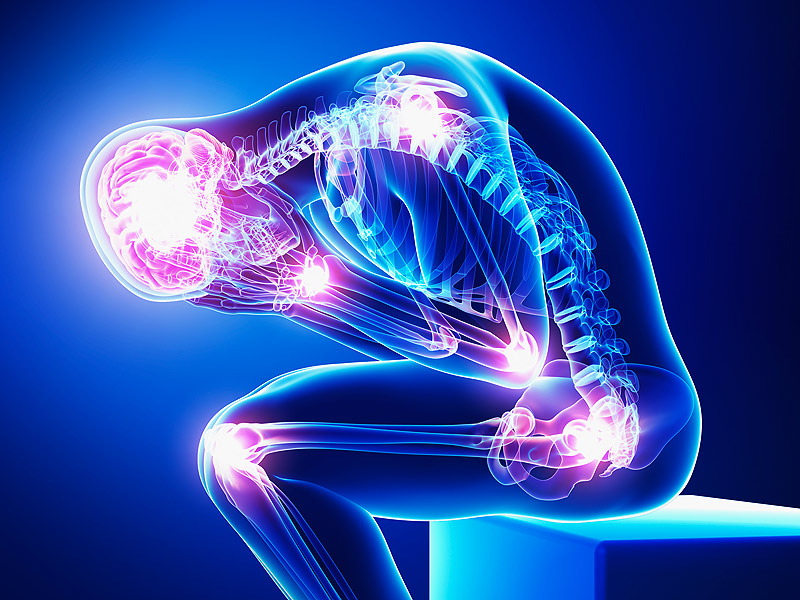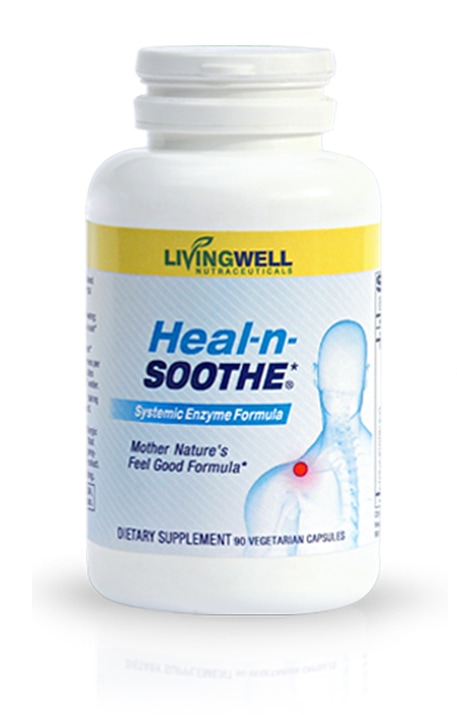Pain.
I have a nephew in his 30s. What should be the prime of his life is overtaken by pain. Pain caused by genetic conditions and living situations he can’t adjust or change. I hate when I or anyone I love is in pain. Pain is a natural part of life, though. However, there are natural ways to reduce the inflammation that causes the pain – and this is even true for the pain of chronic conditions.
Acute Inflammation vs. Chronic Inflammation
Acute inflammation is part of our body’s curative process. Its swelling, redness, heat, and often inability to function is the biological response to injuries, damaged cells, or irritants as it works to remove the harmful or injurious stimuli. Without acute inflammation—the blood plasma and leukocytes rushing to the injured site to begin the healing— damaged tissues might keep getting worse, which would compromise the injured organ.
Chronic inflammation, on the other hand, can cause long-term damage if not reversed. In fact, studies now show inflammation as a root cause of such auto-immune diseases as cancer, arthritis, fibromyalgia, chronic fatigue syndrome, and more. In the past, for example, heart disease was considered a byproduct of too much cholesterol, fat, or lack of exercise. Now researchers are finding that inflammation is the real culprit behind plaque build-up, aka “hardening of the arteries.”
A lot of us—like, say, me—are so busy with our lives that we ignore the warning signs our body sends us. Even worse, some of us mask those warnings by grabbing a NSAID (or possibly a naturopathic or homeopathic equivalent) for instant, albeit temporary, relief.
That’s not the answer. In fact, it’s part of the problem. Let me tell you the story of The Elbow.
Respond to Pain – Don’t Hide It
Once upon a time on a cold day in March, I went to clean out the fireplace and build a new fire, a simple enough task for those of us who rely on fireplaces to heat all or portions of our homes.
 Somehow, I managed to move the fireplace irons at an odd angle. Please don’t ask how. When I was five years old, my ballet teacher told my mom not to bring me back to class. Something about an extreme lack of coordination.
Somehow, I managed to move the fireplace irons at an odd angle. Please don’t ask how. When I was five years old, my ballet teacher told my mom not to bring me back to class. Something about an extreme lack of coordination.
In any event, my odd-angle move caused a mess as the irons, the ashes, and the grate fell.
On my elbow.
Owwwwww!
After crying and writhing on the floor in pain for a few moments, I realized my dogs wouldn’t get me the arnica, my go-to homeopathic remedy for bruising and sore muscles. I had to get myself up and do it myself. My elbow was already deeply discolored and badly swollen—so much that I couldn’t bend it and thought I might have chipped a bone.
Since this was obviously more than a bruise, I reached for symphytum, also known as the “bone-knitting” remedy. It hardly touched the pain.
Life didn’t stop, though, and I knew I couldn’t either, so I did exactly what I always tell my clients not to do: I ignored the pain. Pain is a signal: “Pay attention to me! I need help now!” But, no, I just meditated a lot and just kept using my elbow as much as I could. Was this a smart idea? No. No it was not.
Most people probably would have turned to various medications by that point, but fortunately, my body rejects drugs. I say fortunately, because my body has a tendency to become addicted to recreational substances, like chocolate. Especially raw chocolate, yummy, soul-satisfying choco…
But I digress. The point is, toxicity from drugs can damage organs and cause more pain than they alleviate in the long run, so I always recommend avoiding them unless all other natural interventions fail. Since drugs are not an option for me, and meditation, arnica, Traumeel®, symphytum, and all my other natural remedies weren’t helping, I just went on trying to ignore the pain and hoping The Elbow would heal on its own.
It didn’t.
One day, just like on TV when the guy hits his forehead and says, “Duh! I coulda had a V8!,” the light bulb went off over my head. The Elbow wasn’t acutely inflamed anymore; it had become chronically inflamed. If I couldn’t figure out a way to eat up the inflamed tissues, it could only get worse and possible even transmute into osteoarthritis! Think, Bera, think! What eats up inflamed tissue?
Duh again! Proteolytic enzymes! I knew that!
Proteolytic enzymes aren’t the same as digestive enzymes that help digest food. Proteolytic enzymes work systemically to support chemical reactions throughout the body. They’re also known as systemic enzymes.
I already knew that, too. Sometimes when we’re in pain, we just don’t think as well.
Enzymes = Life
When we were young, we didn’t need to take enzymes because our bodies were, well, young. But one of the things our bodies produces less of as we age—besides hormones and new hair growth and  other minor inconveniences—is enzymes. The more processed and dead foods we eat, the more digestive enzymes we need to break them down. The older our body gets, the more we need proteolytic enzymes to keep it in good repair.
other minor inconveniences—is enzymes. The more processed and dead foods we eat, the more digestive enzymes we need to break them down. The older our body gets, the more we need proteolytic enzymes to keep it in good repair.
Without enzymes we’re not alive. Our muscles, bones, tissues, organs, cells, bloodstream—our ability to think, feel, react, breathe, see, and hear – all depend on enzymes to function. Proteolytic enzymes take a load off the immune system by dissolving foreign proteins like bacteria and tumors the immune system is trying to reject.
So, duh again—what was I waiting for, someone to remind me I had a choice?!
I immediately grabbed a bottle of Heal-n-SOOTHE Proteolytic Enzymes (a systemic enzyme formula) for The Elbow and took them as directed. . The throbbing pain in my elbow while bending enough to get the capsules into my mouth reminded me how foolish I’d been to ignore it for so long.
As I worked in the garden about three hours later, I suddenly realized the familiar ache in The Elbow was not as intense as usual. I took another dose later that day, and the pain was even less when I went to bed.
The same thing happened the next day. I took the enzymes between meals so they would work on digesting the foreign proteins that had built up into chronic inflammation. That way, they wouldn’t be diverted to digesting the food I’d eaten. I continued to take digestive enzymes whenever I ate cooked foods.
In less than 24 hours, I felt a distinct difference in my pain level.
The Recovery
Two weeks later, I was back to painting, gardening, grooming dogs, and lifting heavy objects, things I hadn’t been able to do without pain (or at all) for over three months. I can’t believe I lived in pain that long when I knew better!
If I’ve had this kind of relief, surely you can have it, too. I refreshed my knowledge about proteolytic enzymes, also known as systemic enzymes or proteases, with a little updated research. Here’s the latest information on how they can help those of us who live in a human body.

- They reduce inflammation so damaged tissues can repair and regenerate, which helps speed up recovery from all injuries, including surgeries.
- They can improve heart health, lessen arthritis, help prevent Alzheimer’s, cancer and many other diseases, and speed recovery from the treatments of those conditions.
- They cleanse toxic debris from the blood and lymph systems.
- They reduce clotting risks and thus the risk of stroke by dissolving fibrin in the blood. Used on long flights, they minimize the risk of leg clots.
- They maximize the immune system, since enzymes are what destroys invaders.
- Taken between meals, they literally go into the bloodstream and digest bacteria, viruses, molds, and fungi.
- By eating up large undigested proteins circulating in the bloodstream, they help eliminate autoimmune diseases, allergies, asthma, and sinusitis.
- They help dissolve/digest scar tissue, which is composed of protein, especially in the cardiovascular system.
- They reduce symptoms of multiple sclerosis and breathing problems.
- They assist with detoxing, especially when taken in therapeutic doses. (Ask a qualified health-care professional for advice in dosing.)
Since everything in our bodies—breathing, liver function, immune system, protein function, all hormonal functions—is regulated by metabolic enzymes, it only makes sense to use proteolytic enzymes to help heal ourselves if our body is under any kind of stress.
One day I’d like to meet someone who isn’t under any kind of stress. Since I never have and doubt I ever will, I guess it makes sense for all of us to use proteolytic enzymes.
A Few Provisos:
1) Proteases (proteolytic enzymes) that break down protein are measured in HUT activity, not in milligrams, so look for activity measurements when you go shopping. The higher the activity measure, the more potent the supplement.
2) It’s not uncommon to have some “down” days when you feel worse instead of better when using natural healing methods. Don’t worry: that just means the toxins are racing out of your bloodstream. It’s exhausting work! Don’t stop taking the enzymes. Tomorrow will undoubtedly be a much better day.
Yay for proteolytic enzymes!
